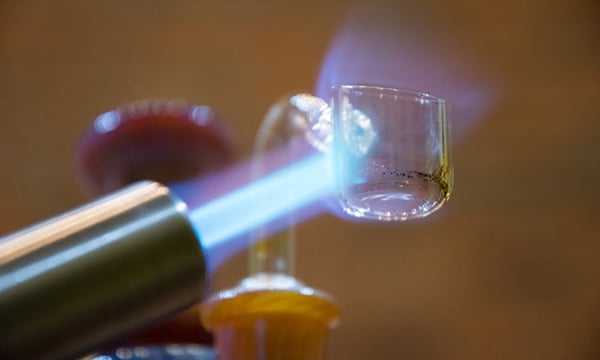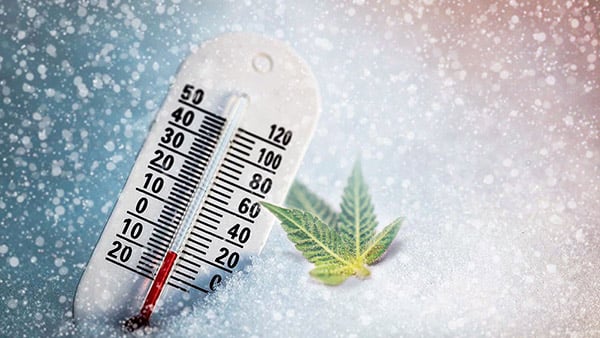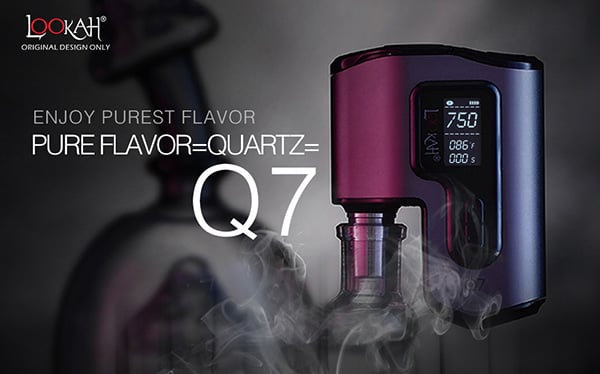Why Low Temperature Is Essential For Dabbing

Why Low Temperature Is Essential For Dabbing

Cannabis concentrate provides a stunning combination of powerful effects and intense flavors. When the concentrate is heated, the cannabinoids and terpenes are released into the vapor, producing the wide range of effects and flavors that cannabis exhibits.
However, knowing what temperature to heat a concentrate to is crucial. Getting the right temperature can make the difference between experiencing delicious and profound effects or tasting the scorched disappointment of being too hot to vape effectively.
The best temperature for full-flavor dabs is between 300 and 450 degrees F.
We will get into the exact temperatures for all the flavors and cannabinoids later, so read on for how to get the best dabs.
Why is temperature important when dabbing

So why is temperature control so crucial for Dabbing?
In a word: terpenes.
If you're not familiar with terpenes, they're the compounds in cannabis that give the plant its distinctive smell and flavor. Although cannabinoids are also extremely sensitive to temperature, THC and other cannabinoids are tasteless, so each strain's unique aroma depends on which terpenes dominate the plant.
Each terpene is unique in terms of its therapeutic benefits and the taste it produces. Each terpene has its own thermal sensitivity, resulting in a unique vaporization point.
The extraction method used to create the cannabis oil or wax concentrate varieties and the temperature at which you dab or vaporize the concentrate can significantly affect the flavor characteristics and synergies that occur between concentrated cannabinoids and terpenes.
The differences between terpenes can be seen in this shortlist of boiling points for some of the common terpenes found in cannabis:
- Linalool: 388 degrees F
- ß-Caryophyllene: 320 degrees F
- ß-Myrcene: 334 degrees F
- D-Limonene: 349 degrees F
- Humulene: 223 degrees F
- α-Pinene: 311 degrees F
Click to read more about these and other terpenes.

Drop the torch and catch the delicious terpenes.
Unless you can monitor and control the temperature of your dab, the temperature at which you heat your nails will probably exceed the proper temperature range. When using a butane torch to heat your dabbing surface, most people will overheat the surface by exposing it to the torch for too long.
This overexposure to such high temperatures can easily lead to temperatures exceeding 1000 degrees Fahrenheit, too hot to vaporize concentrates effectively.
The essential oils that bind together to create cannabis's psychoactive effects are destroyed at such extreme temperatures. By incinerating these compounds directly responsible for the flavors, the result is a burnt, unpleasant vapor. Furthermore, any benefits of individual terpenes are lost in the process.
Fortunately, the advent of electric nails allows dedicated connoisseurs to fine-tune their experience more precisely. Electric nails arose mainly because of their ability to efficiently retain heat at low temperatures, allowing you to capture the full flavor and benefits of terpenes and cannabinoids.
Devices like the palm-sized Lookah Q7 enail make dabbing concentrate easier and more precise. The Lookah Q7's variable thermal controller allows you to heat a built-in quartz cup to your preferred temperature.
Its digital display, combined with appropriate calibration, enables consistent temperatures and consistent vapors.
Lookah Q7 provides stability and control to avoid the peaks and troughs of temperature fluctuations caused by heating and cooling nails.
If you can't afford an enail all is not lost. You can use an IR thermometer to check the heat of your nail to ensure it's in the correct range before you dab. This will help take the guess work out of heating your nail and then guessing how long to wait for it to cool.
You can also use the cold start method of reverse dabbing.
Can your vape pen withstand heat?
Not all devices are created equal when it comes to vape pens that can handle the various boiling points of different terpenes. Like torch and dab nail settings, many vapes designed for oil and wax can heat to over 1,000 degrees Fahrenheit in a few seconds, effectively ruining the delicious experience the concentrate provides.
Since most vaporizers reach such a high temperature so quickly, they don't actually vaporize at all. The smoke is just that: smoke. When the temperature reaches the combustion range before the product is properly melted, any health benefits associated with vaping also go up in smoke.
The concept behind the standard "coil and wick" vape pen is to slowly heat the oil and melt it into a wick located in the middle of the coil. Once the wick is saturated - usually within 3-4 seconds - the coil should reach a reasonable temperature, usually just above the boiling point of terpenes commonly found in cannabis.
When the coil heats the fibers of the wick to temperatures within the boiling point range of cannabinoids and terpenes, the oil vaporizes from the fibers rather than burning directly from the coil. The whole process takes about 7-10 seconds, with the heat source reaching a maximum temperature between 600 and 700 degrees Fahrenheit.
Lookah's unique quartz cups, dishes, and electric dab straw tips take this process to the next level, preserving every dab's flavor and potency.
In essence, high temperatures lead to reduced efficacy and an unpleasant taste. The highest point of a suitable heat source for vape use should be approximately 700 degrees Fahrenheit to adequately heat the oil to the correct meting point temperature.
The high-resistance atomizers in Lookah's portable line of seahorse dab pens enable lower, more stable temperatures at which cannabis concentrate can be vaporized.
Now that you have a deeper understanding of how tasty terpenes are, their sensitivity to different temperatures, and the tools you can use to hone your vaping experience, you can look forward to maximizing each dabbing experience.
Devices such as the Lookah Q7 or Lookah Seahorse Dab Pen family, when dabbing at home or on the go, produce a tasty combination of cannabinoids and terpenes, enabling consumers to take full advantage of the benefits of these valuable compounds.







